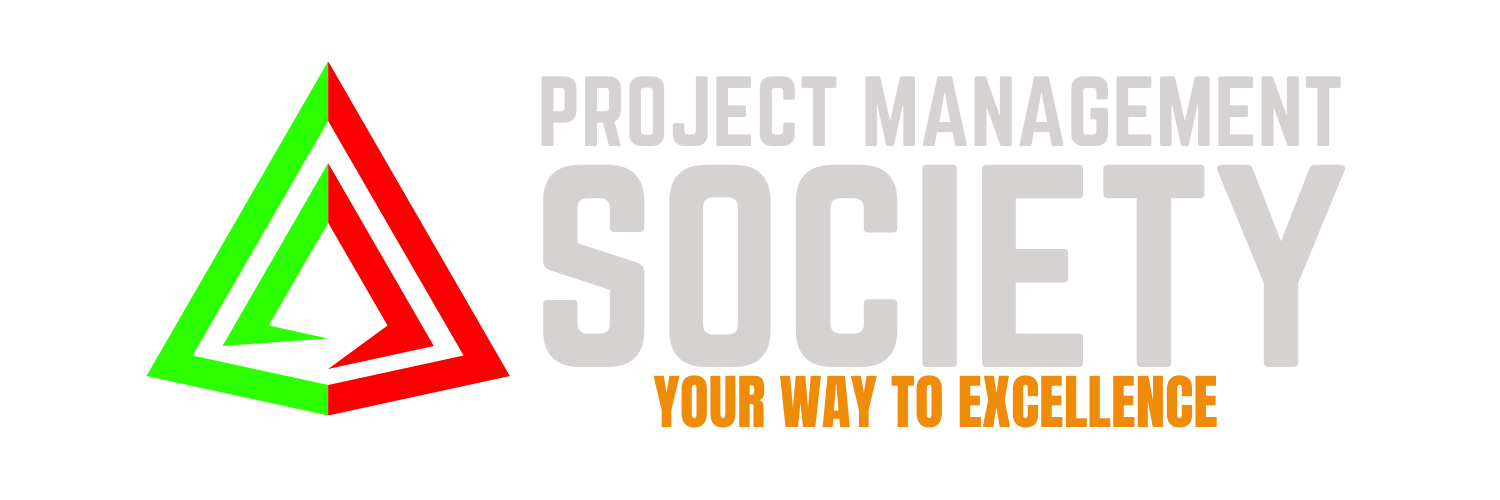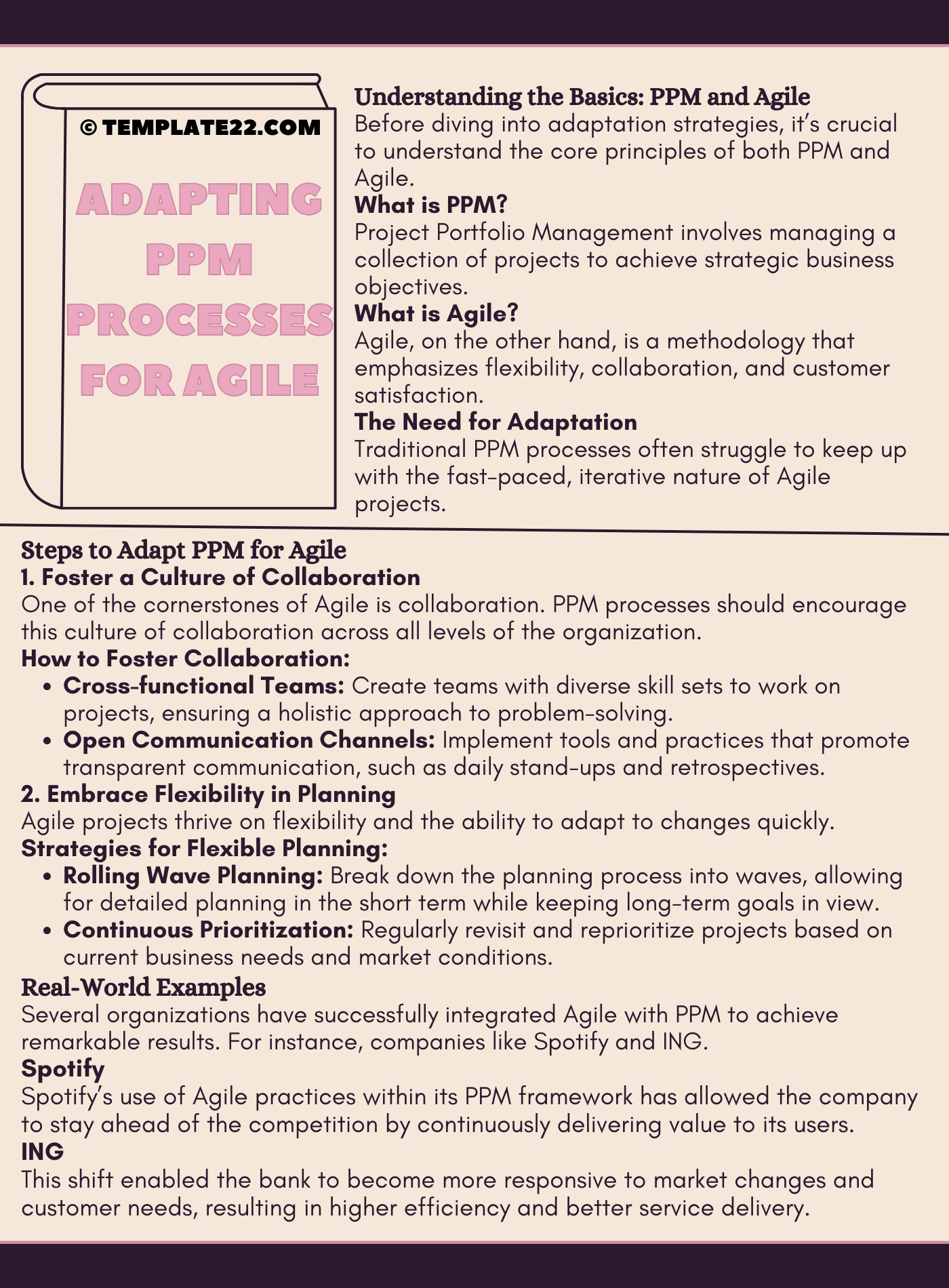 Project Portfolio Management (PPM) and Agile methodologies are two powerhouses in the world of project management. Each has its strengths, and when combined effectively, they can lead to remarkable results. In this blog, we’ll explore how to be Adapting PPM for Agile environments, ensuring your organization stays flexible, efficient, and successful.
Project Portfolio Management (PPM) and Agile methodologies are two powerhouses in the world of project management. Each has its strengths, and when combined effectively, they can lead to remarkable results. In this blog, we’ll explore how to be Adapting PPM for Agile environments, ensuring your organization stays flexible, efficient, and successful.
Understanding the Basics: PPM and Agile
Before diving into adaptation strategies, it’s crucial to understand the core principles of both PPM and Agile.
CLICK HERE TO DOWNLOAD 300+ PROJECT MANAGEMENT TEMPLATES & DOCUMENTS IN EXCEL
What is PPM?
Project Portfolio Management involves managing a collection of projects to achieve strategic business objectives. It focuses on selecting the right projects, prioritizing them, and allocating resources efficiently to maximize value and minimize risks.
What is Agile?
Agile, on the other hand, is a methodology that emphasizes flexibility, collaboration, and customer satisfaction. Agile projects are broken into smaller, manageable increments called sprints, allowing teams to adapt quickly to changes and deliver continuous value.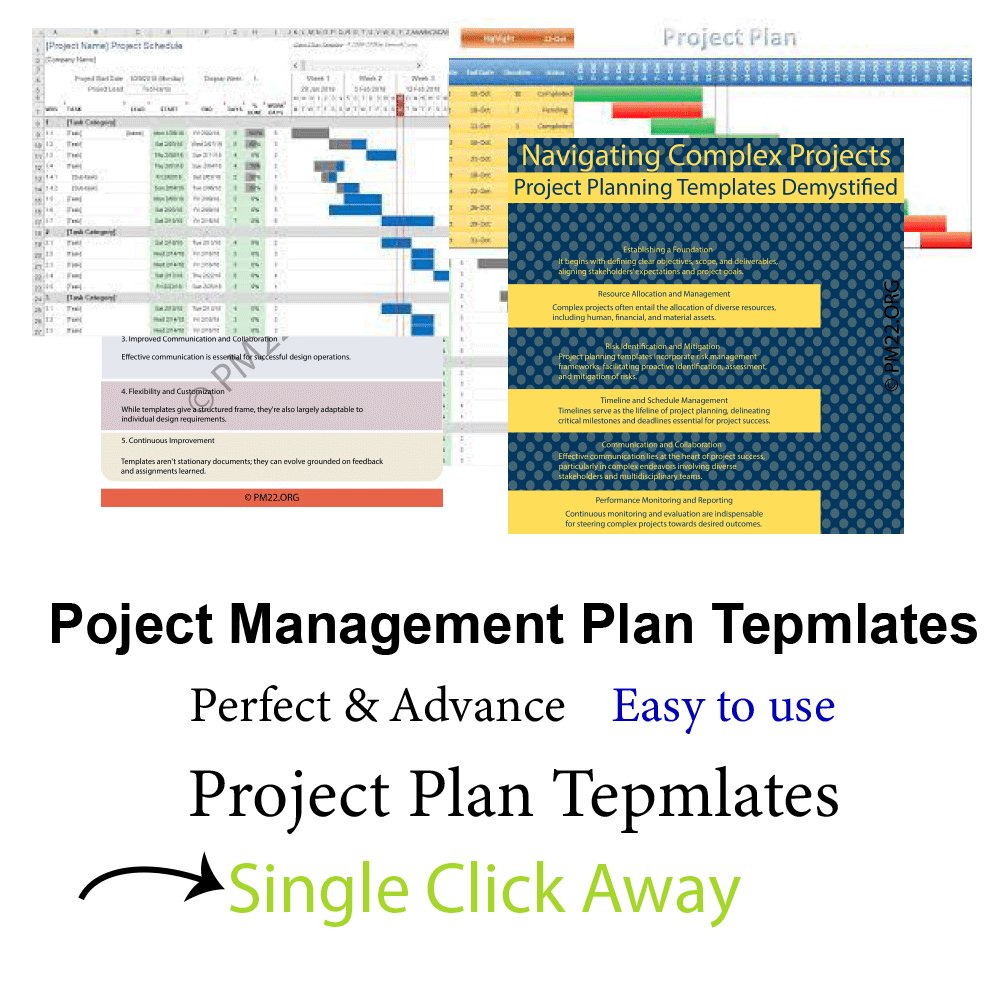
The Need for Adaptation
Traditional PPM processes often struggle to keep up with the fast-paced, iterative nature of Agile projects. To bridge this gap, organizations need to adapt their PPM strategies to support Agile principles without losing sight of overall portfolio objectives.
Steps to Adapt PPM for Agile
1. Foster a Culture of Collaboration
One of the cornerstones of Agile is collaboration. In an Agile environment, teams work closely with stakeholders and customers to ensure the product meets their needs. PPM processes should encourage this culture of collaboration across all levels of the organization.
How to Foster Collaboration:
- Cross-functional Teams: Create teams with diverse skill sets to work on projects, ensuring a holistic approach to problem-solving.
- Open Communication Channels: Implement tools and practices that promote transparent communication, such as daily stand-ups and retrospectives.
CLICK HERE TO DOWNLOAD 300+ PROJECT MANAGEMENT TEMPLATES & DOCUMENTS IN EXCEL
2. Embrace Flexibility in Planning
Agile projects thrive on flexibility and the ability to adapt to changes quickly. Traditional PPM methods often rely on rigid, long-term planning, which can be a hindrance in an Agile setting.
Strategies for Flexible Planning:
- Rolling Wave Planning: Break down the planning process into waves, allowing for detailed planning in the short term while keeping long-term goals in view.
- Continuous Prioritization: Regularly revisit and reprioritize projects based on current business needs and market conditions.
3. Integrate Agile Metrics with PPM
Agile projects use specific metrics to track progress and performance, such as velocity, burndown charts, and customer satisfaction. These metrics need to be integrated into the PPM framework to provide a comprehensive view of the portfolio’s health.
Key Agile Metrics to Integrate:
- Velocity: Measure the amount of work completed in each sprint to predict future performance.
- Burndown Charts: Track the remaining work in a sprint to ensure timely delivery.
- Customer Satisfaction: Gather feedback regularly to ensure the project meets customer expectations.
4. Streamline Resource Management
Effective resource management is crucial in both PPM and Agile. In Agile environments, resources need to be allocated dynamically to match the fluid nature of project requirements.
Tips for Streamlined Resource Management:
- Resource Pooling: Create a centralized pool of resources that can be dynamically allocated based on project needs.
- Skill Mapping: Understand the skills and expertise of your team members to ensure the right people are assigned to the right tasks.
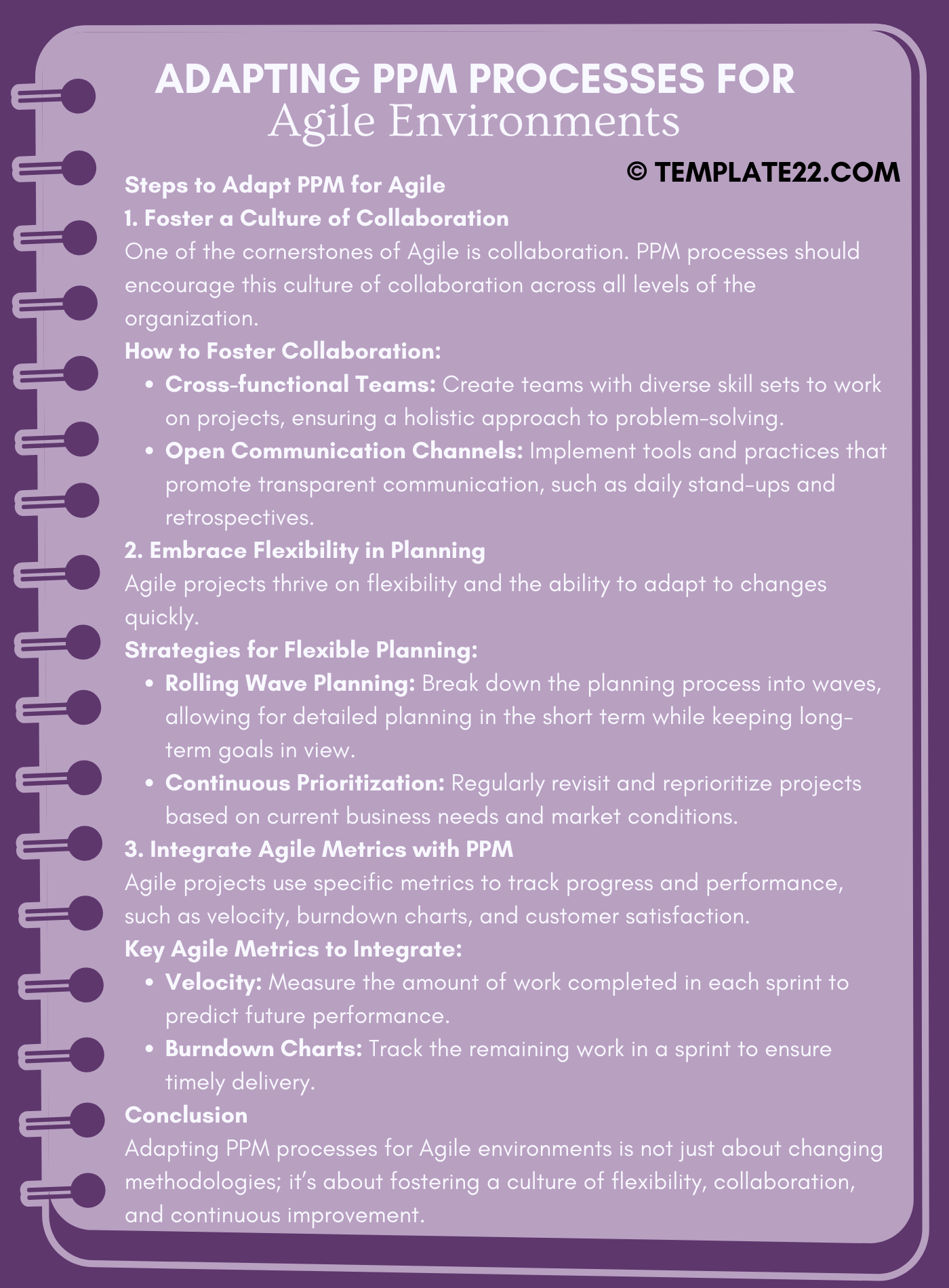
5. Foster an Agile Mindset
Adapting PPM processes for Agile environments requires a shift in mindset at all levels of the organization. Leaders and teams must embrace Agile values and principles to create a truly Agile-friendly PPM framework.
Promoting an Agile Mindset:
- Training and Development: Invest in training programs to help teams understand and implement Agile practices.
- Leadership Support: Ensure leaders champion Agile values and create an environment that supports experimentation and learning.
Real-World Examples
Several organizations have successfully integrated Agile with PPM to achieve remarkable results. For instance, companies like Spotify and ING have adopted Agile methodologies across their portfolios, leading to increased innovation, faster time-to-market, and improved customer satisfaction.
Spotify
Spotify’s use of Agile practices within its PPM framework has allowed the company to stay ahead of the competition by continuously delivering value to its users. Their focus on small, autonomous teams ensures rapid iteration and innovation.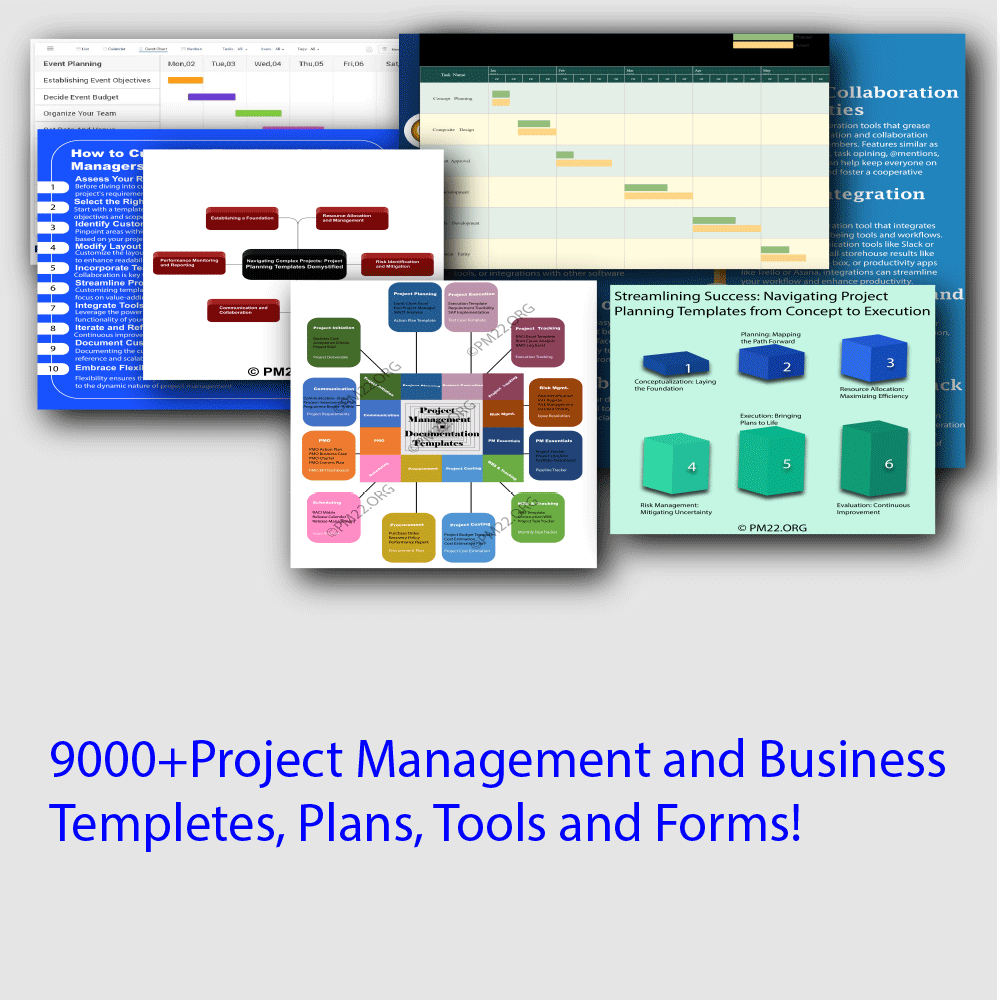
ING
ING transformed its traditional PPM processes by embracing Agile at scale. This shift enabled the bank to become more responsive to market changes and customer needs, resulting in higher efficiency and better service delivery.
Conclusion
Adapting PPM processes for Agile environments is not just about changing methodologies; it’s about fostering a culture of flexibility, collaboration, and continuous improvement. By embracing Agile principles within your PPM framework, you can enhance your organization’s ability to respond to change, deliver value faster, and achieve long-term success.
